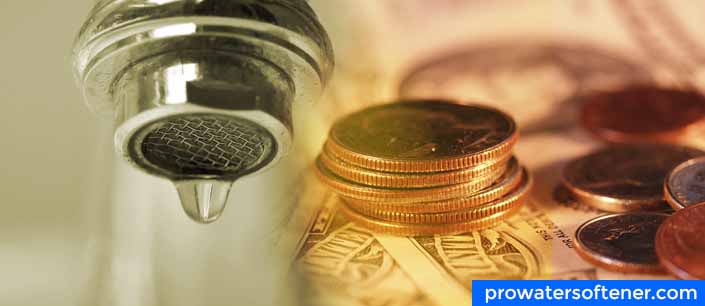The popularity of water softeners is constantly growing despite facing a lot of challenges. However, many new buyers are often confused about certain things before purchasing a water softener system, especially water regeneration. Remember, it’s most important to have a reliable and efficient water softener for fewer bills and healthy water. This article will try to clear the most common confusions and myths related to water softeners and their regeneration process.
Table of Contents
How Much Extra Water Does A Water Softener Use?
We cannot answer this question firmly as it depends on the type of water softener and several other things. However, we will explain a few main factors that are very important to consider when it comes to water regeneration capacity. Below, we will list down a few essential points for your convenience.
Type of Water Softeners System
There are several types of water softeners available in the market. Some of the water softeners use dual tank systems, while others use the on-demand system. If you are using a dual tank system, then your water softener’s usage capacity will be more as compared to the On-Demand water softener.
Water Hardness Level
Another most important factor is the level of hardness in your water. However, on average, most water softeners usually require 20-25 gallons of water during the water regeneration process. Remember, this figure is according to the water’s average hardness in mind during a survey around different locations.
Can a Water Softener System cause a High Water Bill?
Now you are thinking, Do water softeners increase the water bill? The increase or decrease in the water bills has nothing to do with water usage. There are several reasons for it when it comes to an increase in your water bills.
Broken or Leak Pipe
The most common reason for an increase in water bills is broken or leaking pipes. If any of the pipes in your house’s plumbing system are broken or leaked, you will surely experience an increase in your bills.
Any Unknown Leak in Toilet
it’s another most common reason behind an increase in water bills. We all know that toilets use one-fourth of the total water supply in a household similarly; if there is any leakage in the toilet, it will directly cause an increase in water bills.
Hose Leak
When you are watering your lawn or garden, if you have any leaks or punctures in your hoses, you can see an increase in water bills as well.
Broken Faucet
A broken faucet may also be responsible for an increase in water bills. According to one recent research, a dripping faucet can waste up to 20 gallons of water in a single day.
Check Out: Top 5 Electronic Water Descaler (Water Saver)
Frequently Asked Questions (FAQs)
1. How Often Should Your Water Softener Regenerate?
Well, there is no specific answer to this particular question as well. Regular water regenerations are often appreciated as they keep the resin bed active for a long time. However, on average, a water softener should regenerate anywhere between 2-3 days. Remember, this duration can be increased or decreased depending upon the usage, hardness level, amount of minerals, and capacity.
2. How Long Does a Water Softener Take To Regenerate?
If we talk about manual water regeneration, then water softer should take anywhere between 85 to 90 minutes for regeneration. During the water regeneration process, a chemical reaction occurs to remove the excess minerals from water.
3. How Many Gallons of Water Does It Take to Regenerate?
An ordinary softening unit uses almost 35 to 60 gallons of water for a complete water regeneration process. However, it also depends on several other factors, such as size, brand, and capacity. On the other hand, some water softeners only use 20-25 gallons for the water regeneration process.
4. Should there be standing water in my water softener?
Standing water in a salt tank is a normal thing to some extent but if you are experiencing more than usual water overflow, then this is something to worry about. So try to avoid standing water in the water softener system.
5. How much water should be in my brine tank?
There should be about 15-25 cm (6-10 inches) of water in your brine tank. The water will be in your tank even in between regeneration times or cycles. You may not see the water if your salt level is higher than your water level.
Check Out: 10 Top Rated Water Softeners for Well Water in 2022
Final Verdict
We hope our detailed article has given you enough understanding about how much water does a water softener use. We have tried our best to explain the most in-depth information based on facts. However, you should also keep in mind that most of the time; the regeneration process depends on your water softener type and brand.
It’s also essential to keep your daily water usage in mind according to the total number of family members in your house. If you still have any questions in your mind, don’t hesitate to comment below. You can also ask for suggestions regarding the best water softeners in our email. Don’t forget to share this valuable information with your friends and colleagues.

Steve Smith is a United State Licensed Plumber with over 18 years of plumbing experience. Steve has conducted residential and commercial plumbing jobs throughout the state and currently works for one of California’s largest plumbing companies. When he’s not working, Steve enjoys spending time with his daughter and son.

![Can you drink water from a water softener? [Important to Know] drinking soft water](https://prowatersoftener.com/wp-content/uploads/2021/03/drink-water-from-softener-150x150.jpg)







Leave a Reply